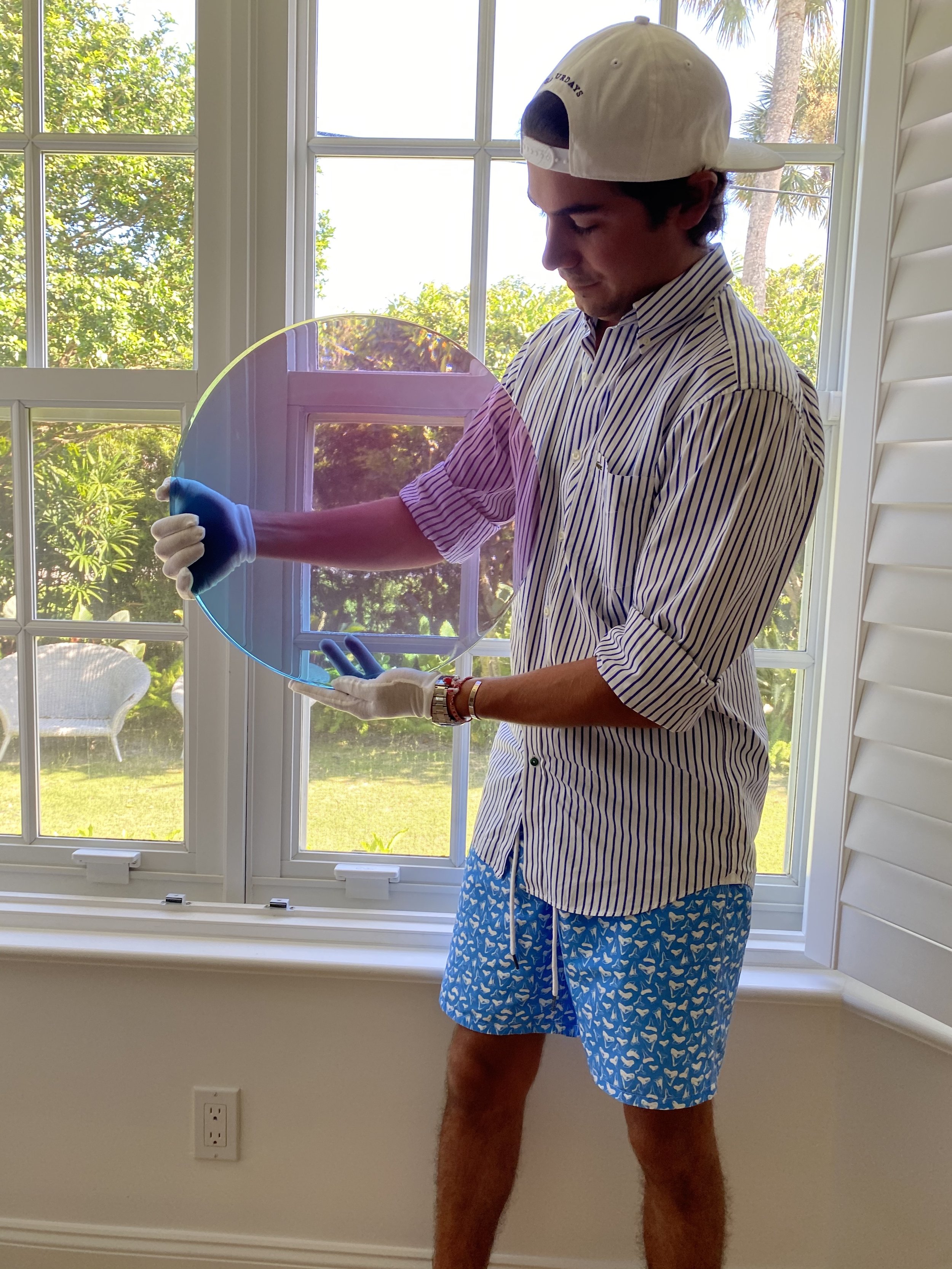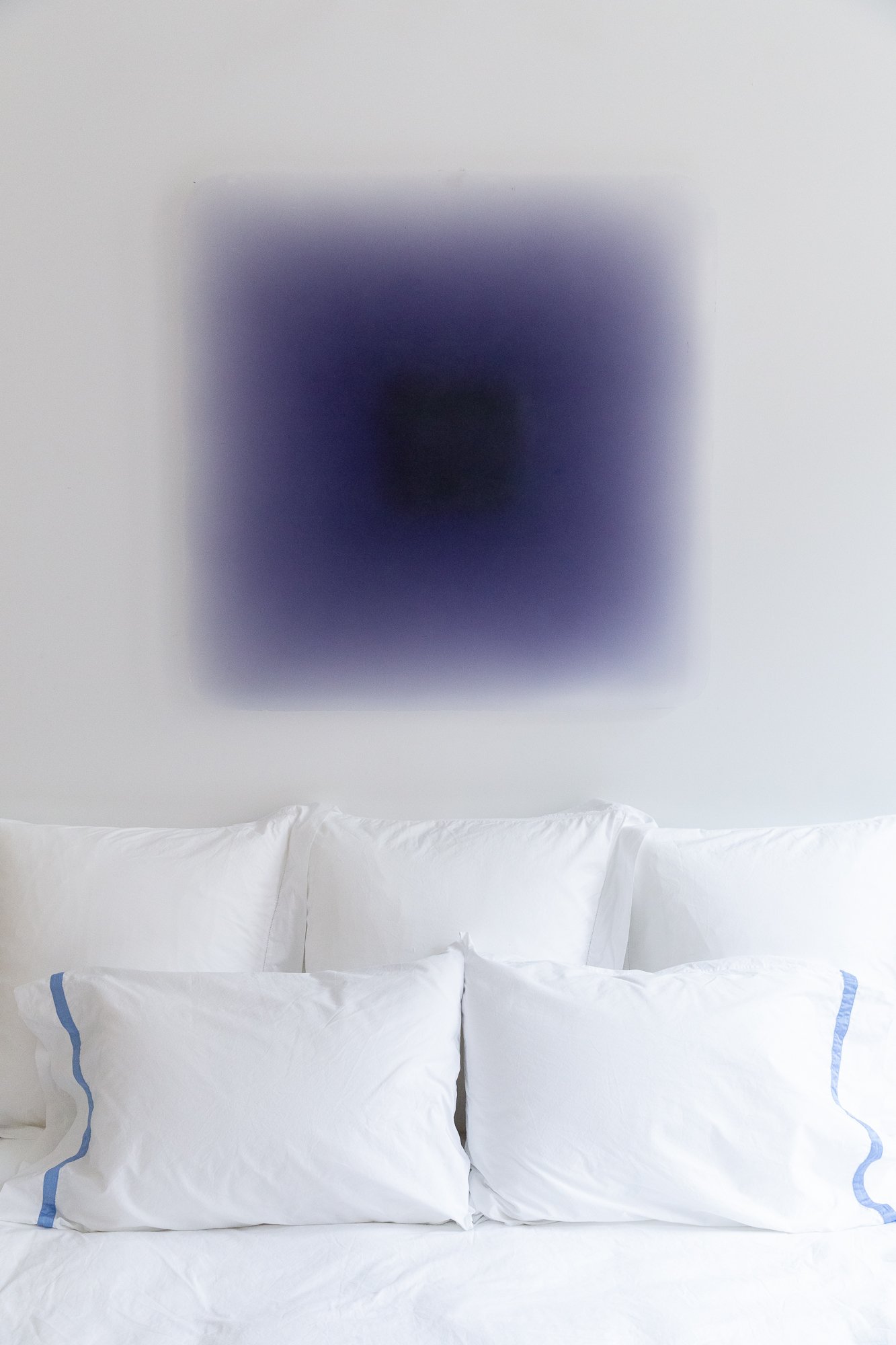Elsa Åkesson in Conversation with Collector, George Merck
George Merck.
George Merck is a Palm Beach-based art collector with a strong appreciation for minimalist art.
A member of the Board of Trustees at the Smithsonian’s Archives of American Art, he has recently been appointed Chair of the Gala Subcommittee.
MADE IN BED’s Editor-in-Chief Elsa Åkesson speaks to George Merck about his art collecting journey and philanthropic interests in the art world.
Merck’s private collection.
Elsa Åkesson: Thank you, George, for being with us today! How did your art collecting journey start?
George Merck: My passion for the visual arts started when I was very young. While in college at Southern Methodist University, Dallas, I focused on Economics at the request of my family, but with time ended up studying Art History. I started collecting basic editions and smaller prints right after my graduation, when I moved to New York City. I then began to get into more formal collecting, beginning with art works from the Arte Povera and Post-War movements. My interest thereafter transitioned to the Light and Space movement, as well as West Coast Minimalism. I found it to be the more appealing kind of art to me.
EÅ: Do you follow a collection concept?
GM: I am inspired by the way the works in the collections are displayed and the dynamics and structures of certain collections. Personally, the collections I draw the most inspiration from are those of the Crystal Bridges Museum of American Art.
Merck’s private collection.
EÅ: Has being an art collector opened some interesting doors for you in the art world?
GM: Yes. An example would be meeting the Board of Trustees at the Smithsonian’s Archives of American Art. This was the most important introduction I received as it opened many new doors in the art and culture sectors. Thanks to this, I now have relationships with world-leading museums and institutions.
EÅ: What would be your advice to young art collectors?
GM: My first piece of advice would be not to get into ‘competitive collecting’. It is a common problem we are encountering, one which is being emphasised by social media platforms such as Instagram. My advice would be to start collecting what you like, because at the end of the day, you will be the one living with the artwork. One should also not forget that in the collecting process, you will always encounter inaccuracies or what you could personally consider a ‘fault’.
An example of a discouraging experience as an art collector could be discovering you bought a work that was overvalued. It is a terrible moment, but you can use it to your advantage by learning from your mistake and moving forward pragmatically, which makes you become a better collector.
Merck’s private collection.
EÅ: Could you tell us about some of your philanthropic involvement in the art world?
GM: I have been a member of the Smithsonian Institution’s Board of Trustees since 2017. Moreover, I work with the Smithsonian Archives of American Art, which is the world’s preeminent resource dedicated to collecting and preserving the visual arts in America. I have also been appointed as Chair of the Gala Subcommittee since 2019.
EÅ: What is your favourite way of discovering new artists?
GM: I have worked with art advisor Anna Hygelund since I started collecting. She really helps me. I think it is almost impossible to distinguish artists who will become recognise in the current art market without a good art advisor. Many variables are involved in becoming a successful artist in the current industry, so being helped by an art advisor I trust and who takes every angle into account is very important. Anna introduced me to many talented and promising early-career to mid-career artists.
One other way I enjoy discovering artists is by reading. I love to read as I feel it helps evoke a real understanding of the movement the work belongs to, but also to comprehend the other artists of the same movement and how they interact with each other.
EÅ: Are there criteria you look for in an artist’s works when purchasing a new piece?
GM: If it is a younger artist who is up-and-coming, gallery representation would be key. I also look at academic history. When possible, I appreciate having an in-person conversation with the artists themselves, as it allows me to really comprehend the creation behind the work.
For older artists, such as mid-career to established, I would firstly look at the provenance of the piece, its importance in the portfolio of the artist and if it belongs to a strong series of the artist’s works created in their career.
Violet Puff by Peter Alexander.
Merck’s private collection.
EÅ: The art world is known to be an intimidating circle. What has your experience been as an art collector, related to this?
GM: The art world is very intimidating. There are sharks in the market, just as in any other market. My personal advice would be to smile a lot but keep your eyes wide open.
EÅ: And to end our interview, if you had to choose one work from your whole collection to take with you, which one would it be and why?
GM: I would probably choose Violet Puff by Peter Alexander. I would say it is the most representative work of the Light and Space movement that I own. I love this work. It has been in my bedroom since I bought it five or six years ago.
Thank you very much, George!
Images courtesy of George Merck.
Please visit George Merck’s Instagram to discover more of his art collection.
Elsa Åkesson,
Editor-In-Chief, MADE IN BED






